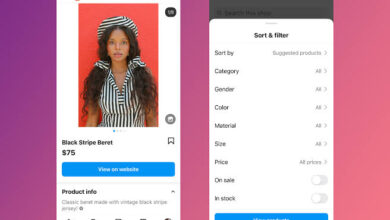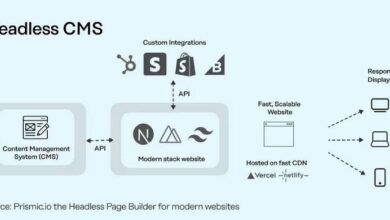How to Use Customer Reviews to Boost Sales

Imagine you’re shopping online for something you really need. You find two similar products. One has loads of positive customer reviews, stories from real buyers, and even photos showing the product in real life. The other has little or no feedback. Which would you trust with your money? Most likely, you’ll go with the one other people like.
That’s the magic of customer reviews, and it’s never been more important or influential than it is today. In 2025, almost 95% of people read online reviews before making a purchase. In fact, reviews influence more buying decisions than even discounts or promotions. If a business can get just one extra star rating online, its sales revenue could jump by up to 9%. That’s huge!
But customer reviews are much more than just star ratings or comments. They are genuine voices from your current shoppers, sharing what’s good (or not-so-good) about your business. When people see these honest opinions, doubts fade, trust goes up, and buying becomes easier.
As a business owner, understanding how to use customer reviews to boost sales is now a must-have skill. Reviews build trust, boost your reputation, and can turn regular visitors into lifelong customers. In this article, we’ll break down, in simple language, exactly how you can collect, display, use, and respond to customer reviews to grow your sales and become a favorite in your market.
Ready to unleash the power of customer feedback? Let’s dive in.
How to Use Customer Reviews to Boost Sales
Before we get into the step-by-step guide, know this: every review is a chance. It’s a chance to win a new customer, fix a problem, show your strengths, and rise above the competition. Even a single good review can tip the scales and inspire someone to choose you over others. Follow these tips to transform those chances into increased sales.
1. Collect Customer Reviews
Getting customer reviews is the first and most important step. Without reviews, there’s nothing to display or use. But, how do you get people to actually leave feedback?
- Ask at the Right Time: Right after a customer gets their product or uses your service, reach out. When the experience is fresh, people are more willing to share their thoughts. A quick follow-up email or text saying, “How did we do? Please leave us a review!” can work wonders.
- Make It Super Simple: People are busy. If leaving a review feels complicated, they won’t bother. Provide a direct link to your review page. Keep forms short and easy, just a star rating and a box for comments.
- Use Multiple Channels: Don’t just rely on one method. Use email, website pop-ups, and even your social media to invite reviews. Some companies ask for feedback in person or print QR codes on receipts.
- Motivate Gently: For an extra nudge, you might offer a small thank-you, like a discount or contest entry. Just be sure to follow the rules of the review platform to avoid fake or misleading reviews.
- Personalize Your Request: If you can, mention what they bought or reference their recent experience. “Hi Anna, how do you like your new running shoes?” feels much friendlier than a generic message.
Read Next: What Makes a Website Privacy-compliant in 2025?
Businesses that collect more reviews build credibility quickly, products with just 5 reviews are up to 270% more likely to sell than those with none.
2. Display Reviews Clearly
Collecting reviews is just half the job. Showing them in the right places makes them work to boost your sales.
- Show on Product Pages: Always display reviews directly below each product. When visitors see glowing feedback next to the “Buy Now” button, their confidence skyrockets.
- Use Star Ratings and Written Comments: Both are essential. Stars give a quick snapshot, while comments provide real-life stories and details. Show average star ratings in search results, too, if possible.
- Place Strategically: Put reviews in spots people can’t miss, like near product descriptions, at checkout, or as a scrolling banner. Some sites use pop-ups or widgets so visitors see recent customer comments in real-time.
- Create Testimonial Pages: For service-based businesses, a dedicated review or testimonial page gathers all praise in one spot, making it easy for new visitors to browse.
- Add Trust-Building Elements: Highlight the customer’s name (or at least initials), their location, or even a photo, this makes the review seem more real, increasing trust. Video testimonials, if you can get them, are even more powerful.
The clearer and more visible your reviews, the more they can push visitors closer to purchasing.
3. Use Positive Reviews in Marketing
Don’t let good reviews sit quietly on your site, shout them from the rooftops. Leverage them everywhere you interact with potential new buyers.
- In Social Media: Share screenshots or copy snippets of great reviews on your Instagram, Facebook, X, or TikTok pages. You can design eye-catching graphics with a happy customer’s words and tag them (with their permission).
- Ads and Promotions: Customer testimonials work brilliantly in ads, digital or print. Use a powerful quote as your ad headline or include a five-star review in your Google or Facebook ads to instantly build credibility.
- Emails: Sprinkle positive feedback throughout your marketing emails, especially in newsletters or post-purchase campaigns. “Here’s what real customers say…”
- On Your Website’s Homepage: Opening your website or landing page with enthusiastic testimonials sets a welcoming, trustworthy tone right away.
When people see that others love your business, they’re far more likely to trust and buy from you. Think of reviews as word-of-mouth marketing that never sleeps.
4. Respond to All Reviews
This step is often overlooked, but it’s a game-changer for building loyalty and protecting your brand’s reputation.
- Say Thank You: Always thank people who leave positive feedback. A simple “Thank you, we’re thrilled you loved it!” let happy customers know they’re valued.
- Address Negative Reviews Calmly: If someone complains, don’t ignore it. Reply quickly, apologize if needed, and address their issue. Promise to fix what went wrong and explain what you’re doing to improve. Others will notice and respect your honesty.
- Be Personal and Sincere: Use the reviewer’s name or mention specifics from their message if possible. Avoid robotic answers, humans respond best to other humans.
- Encourage Solutions: If there’s a bigger problem, invite unhappy customers to follow up directly (via email or phone) to resolve their issue privately, while making your initial reply public.
- Stay Professional: Even in tough situations, always be kind and professional. Politeness and a caring attitude turn critics into supporters and make you look trustworthy to everyone watching.
Responding shows you care about feedback and are constantly working to deliver the best experience.

5. Improve Products and Services Based on Reviews
Customer reviews are free gold for improving your business, don’t waste them!
- Spot Trends and Common Issues: Regularly read your reviews to find repeated praise or complaints. Is everyone loving a feature? Is there a common problem holding people back? Use this data to guide your improvements.
- Fix Problems Fast: If you notice a recurring issue, like slow shipping, missing instructions, or a product flaw, act quickly. Let everyone know you’re fixing it.
- Announce Upgrades: When you improve based on feedback, share it in your replies: “Thank you for letting us know. We’ve updated our instructions as you suggested!” This instantly builds trust and shows you listen.
- Innovate: Sometimes, reviews don’t just point out problems, they offer creative suggestions. Let your customers inspire new features or services.
A business that genuinely listens to customers always stays ahead of competitors and keeps loyal fans coming back.
6. Use Reviews to Encourage More Sales
This is the moment when all your work collecting, showcasing, and acting on reviews comes together.
- Social Proof Sells: People want to be sure they’re making a good choice. Seeing how others have enjoyed your product pushes them over the edge from “thinking about it” to “buying it”.
- Answer Questions and Reduce Doubts: Reviews often cover everything new buyers want to know, product quality, shipping speed, customer service. Highlight reviews that address common concerns.
- Show Case Studies: Feature longer stories or “before and after” examples from real users. These can be shared in blog posts or emails, helping prospects picture their own success.
- Highlight Top Reviews During Sales or Promotions: When you have a big sale or launch a new product, bring your very best reviews front and center. Real, specific praise at the right moment can spark a big jump in conversions.
Read Next: 5 Micro Influencer Strategies for Fashion Startups
Confidence is the final nudge a customer needs, use reviews to provide it, and you’ll see sales grow.
Conclusion
If you want to know how to use customer reviews to boost sales, here’s the recipe:
- Collect Reviews: Make it easy and inviting for customers to share their honest opinions.
- Display Reviews Clearly: Put them everywhere shoppers look, on your website, product pages, home page, and checkout.
- Use Reviews in Your Marketing: Show off great feedback in ads, emails, and social media to attract new customers.
- Respond to Every Review: Thank your supporters and address complaints to build loyalty and show accountability.
- Improve Using Feedback: Turn customer insights into fixes, upgrades, and new ideas to keep your business relevant.
- Encourage Sales with Social Proof: Use the experiences of others to boost confidence, answer questions, and push buyers to make a purchase.
Let reviews work for you: collect them, use them widely, and always show how much you value every customer’s feedback. Every voice you hear (and share) will help your business grow faster, make more sales, and build a reputation that can last for years to come. This is exactly how to use customer reviews to boost sales, and turn happy buyers into lifelong fans.
Frequently Asked Questions
1. Why are customer reviews important for small businesses?
Customer reviews are crucial because they help build trust with new customers. For small businesses, a few positive reviews can make a huge difference by improving credibility and attracting more buyers. On the flip side, ignoring reviews (good or bad) can hurt your reputation.
2. How can I get more customers to leave reviews?
You can collect more reviews by asking at the right time, usually soon after purchase, using email, website pop-ups, or even social media prompts. Make the process simple and, if allowed, offer a small thank-you like a discount or entry into a contest.
3. What should I do about negative customer reviews?
Don’t panic, respond quickly and politely. Thank the reviewer, apologize if needed, and explain how you’ll fix the problem or prevent it in the future. This shows you care and can turn unhappy customers into supporters while reassuring others who read the review.
4. Can displaying reviews really increase my sales?
Absolutely. Businesses that show reviews, especially on product pages, enjoy higher conversion rates. Just five reviews can boost sales by up to 270%, and increasing your average star rating can mean 5-9% more revenue.




